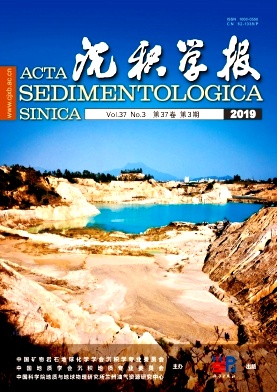Petrological Features and Geological Significance of Acid Volcanic Rock at the Early Diagenesis Stage: A case study of modern volcanic crater deposits in the Waiotapu geothermal area, Taupo Volcanic Zone, North New Zealand
doi: 10.14027/j.issn.1000-0550.2018.151
- Received Date: 2018-03-05
- Rev Recd Date: 2018-07-16
- Publish Date: 2019-06-10
-
Key words:
- Waiotapu /
- acid-volcanic rock /
- petrological features /
- period of condensing consolid-supergene reformation
Abstract: The Waiotapu geothermal system is located in the centre of the Taupo Volcanic Zone of New Zealand, famous for numerous silicic volcanics. Through X-ray diffraction, electron probe, SEM, and the laser Raman test, we examine the petrological and mineralogical features and the genesis of special structures from acid volcanic rock in the period of condensing consolid-supergene reformation. We determined that there are three types of the deposits in the crater:1) Spherulite rhyolite, with the following mineral composition:α-cristobalite, po-tridymite, and orthoclase; Plagioclase phenocryst; Hypersthene and titanomagnetite (ilmenite). 2) Rhyolitic ignimbrite:Plagioclase phenocryst; Plastic glass. 3) Sulfur:Powdered sulphur; Felsic fine-grained detrital rock. Comprehensively, spherulite rhyolite is formed by a volcanic glass-rich rhyolite devitrified from volcanic glass under the effect of a hydrotherm, which is a sign of supergene reformation in acidic volcanic rocks. Rhyolitic ignimbrite is formed by the crystallization of rhyolitic magma during the plastic flow process after they reach the surface, which is a sign of cooling until the rock becomes a condensing consolid in acidic volcanic rocks. According to the sedimentary characteristics, a pattern of supergene reformation in acid-volcanic rock has been established, which provides a modern sample for the study of condensing consolid-supergene reformation of acid-volcanic rock.
| Citation: | YANG YiYao, LIU YiQun, ZHOU DingWu, JIAO Xin, YUE ZhenQi, QIAO JiangHua. Petrological Features and Geological Significance of Acid Volcanic Rock at the Early Diagenesis Stage: A case study of modern volcanic crater deposits in the Waiotapu geothermal area, Taupo Volcanic Zone, North New Zealand[J]. Acta Sedimentologica Sinica, 2019, 37(3): 466-476. doi: 10.14027/j.issn.1000-0550.2018.151 |






 DownLoad:
DownLoad: